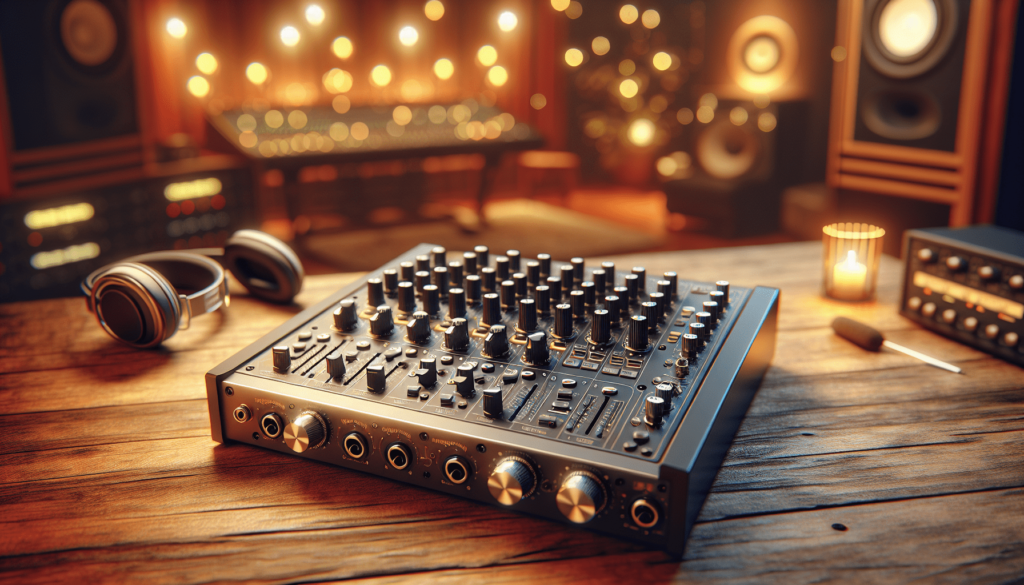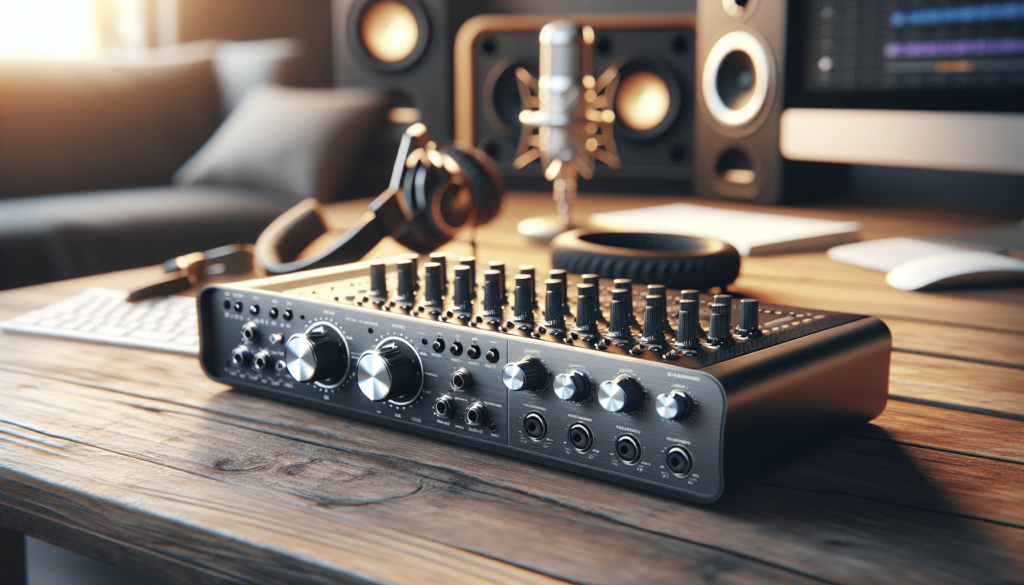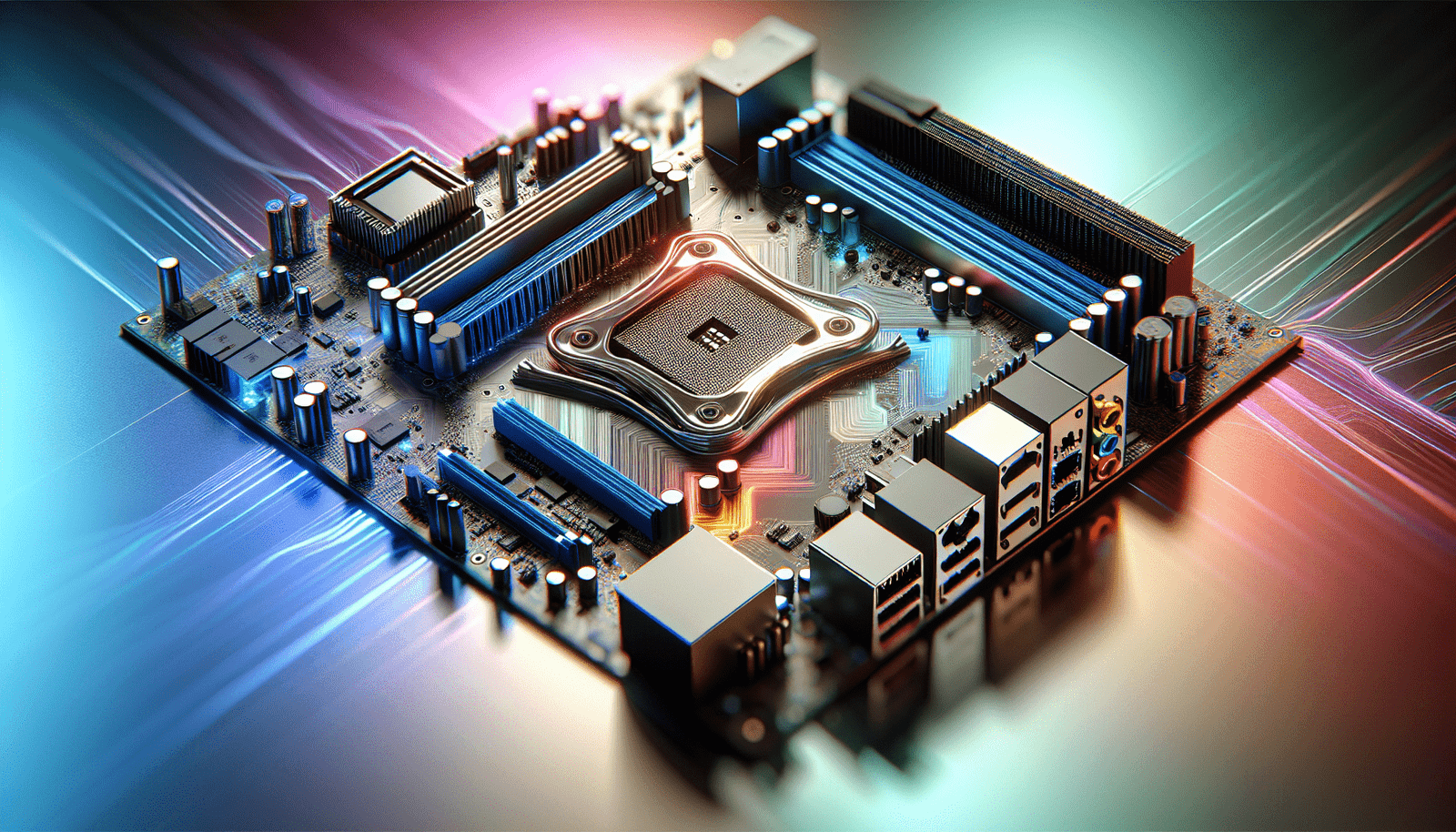Have you ever wondered how the sound you hear on your favorite track gets transferred from a musician’s instrument into your headphones? If you’re involved in music production, podcasting, or even just enjoy high-quality audio, understanding a digital audio interface can transform your listening or recording experience.
What is a Digital Audio Interface?
A digital audio interface is a hardware device that connects audio equipment to your computer. This connection enables the conversion of analog audio signals into digital format and vice versa, allowing for high-quality sound recording and playback. Think of it as a bridge between your instruments, microphones, and your computer, facilitating the seamless transfer of sound.
How Does It Work?
At its core, the interface takes the sound from your microphone or other instruments, converts it into digital data that your computer can understand, and plays it back when needed. The process involves several key components:
- Analog-to-Digital Converter (ADC): This component turns the analog signals from your instruments into digital data.
- Digital-to-Analog Converter (DAC): This part converts digital audio data back into analog signals for playback.
- Connections: Interfaces will have various input and output ports (like XLR, MIDI, or jack) depending on what you want to connect.
Together, these components ensure that the audio quality remains high, regardless of whether you’re recording new sounds or processing existing audio.
Key Benefits of Using a Digital Audio Interface
So, why should you consider using a digital audio interface? There are several compelling reasons that can enhance your audio projects and experiences.
Superior Sound Quality
One of the primary advantages of a digital audio interface is the remarkable improvement in sound quality. Unlike the built-in sound cards in many computers which can be subpar, a dedicated interface offers higher bit rates and sampling rates. This means:
- Greater Dynamic Range: You have more headroom to capture the subtle nuances in your recordings.
- Better Frequency Response: You’ll experience clearer highs and more robust lows, leading to a richer overall sound.
Having better audio quality can significantly enhance your recordings, so whether you’re mixing tracks or recording vocals, you’ll notice the difference.
Lower Latency
Latency refers to the delay between playing a sound and hearing it back through your speakers or headphones. If you’ve ever experienced a lag when playing an instrument or singing while using software, you understand how frustrating that can be. A digital audio interface minimizes this latency, allowing for real-time monitoring without delays. This feature is crucial for:
- Live Performance: Musicians can perform confidently without worrying about awkward lags in playback.
- Recording Sessions: You can lay down tracks while hearing the performance in real-time, which keeps your flow intact and creative juices flowing.
Versatility and Connectivity Options
Digital audio interfaces come packed with various connectivity options, making them incredibly versatile tools for any audio setup. Common features include:
- Multiple Inputs/Outputs (I/O): This allows you to connect several microphones, instruments, and speakers simultaneously.
- Support for MIDI Devices: This lets you integrate synthesizers or other MIDI controllers easily.
- Compatibility with Various Software: Digital audio interfaces generally work with popular Digital Audio Workstations (DAWs), enhancing your editing and mixing capabilities.
This adaptability means you can tailor your setup to fit your specific needs, whether you’re recording a band, podcasting, or producing electronic music.
Enhanced Recording Capabilities
With a digital audio interface, you’re not just limited to basic recording; it opens up a world of advanced recording techniques. You can:
- Multi-Track Recording: Capture different instruments or vocals on separate tracks for easier mixing.
- High-Quality Preamps: Many interfaces come with high-quality preamps that can improve the sound quality of your microphones.
- Phantom Power: If you’re using condenser microphones, many interfaces will provide phantom power, which is necessary for optimal performance.
These features empower you to create professional-sounding recordings from the comfort of your home studio.
Portability and Convenience
If you’re an on-the-go music producer or podcaster, portability is a key factor that cannot be overlooked. Most digital audio interfaces are compact and designed for easy transportation. This means you can:
- Record Anywhere: Set up your recording gear in a bedroom, a friend’s studio, or even while traveling.
- No Need for a Full Studio Setup: You can produce high-quality sound with just a laptop and your interface.
This convenience can lead to more spontaneous creativity, allowing you to capture ideas wherever they strike.

Choosing the Right Digital Audio Interface
Choosing the right digital audio interface can feel overwhelming given the extensive options available. However, narrowing down your choices can simplify your decision-making process.
Determine Your Needs
Before diving into specifications, take a moment to assess your needs. Consider:
- How many inputs do you need? For basic recording, you may only need one or two inputs, but a band might require more.
- What type of recording do you plan to do? If you’re working with instruments and vocals simultaneously, look for an interface with quality preamps and low latency.
Check Compatibility
Ensure that the interface you choose is compatible with your computer’s operating system (Windows or macOS) and your DAW of choice. Most brands will list this information, so it’s easy to verify.
Look for Quality Preamps
Preamps play a significant role in capturing quality sound. Higher-end interfaces typically offer high-performance preamps, which can enhance the clarity of recordings and help you achieve studio-quality results.
Consider Your Budget
Set a budget before you start shopping. Digital audio interfaces come in a wide range of prices. You can find reliable options that fit any budget, but be sure to prioritize sound quality as it directly impacts your recordings.
Read Reviews and Do Research
Once you have narrowed it down based on your needs, compatibility, and budget, take the time to read reviews from users. Their feedback can provide valuable insights into the reliability and functionality of your potential choices.
Think About Additional Features
Some digital audio interfaces come with added features that might benefit you. For example, built-in effects, software bundles, or even touchscreen interfaces may enhance your workflow.
| Feature | Description |
|---|---|
| Inputs/Outputs | Number of microphone and line inputs available |
| Preamps Quality | Type and quality of preamps included |
| Sample Rate | Maximum sample rate supported |
| MIDI Support | Capability to connect MIDI devices |
| Phantom Power | Support for condenser microphones |
| Software Bundle | Included software for recording/editing |
Setting Up Your Digital Audio Interface
Once you’ve selected the appropriate interface, setting it up is generally straightforward.
Physical Connections
Begin by connecting your audio interface to your computer. Most modern interfaces use USB, but some might require FireWire or Thunderbolt connections. Follow these basic steps:
- Plug the interface into an available USB or FireWire port.
- Use appropriate cables to connect any microphones or instruments to the interface’s input ports.
- Connect your speakers or headphones to the output ports.
Installing Drivers
Some interfaces require specific software drivers to ensure proper functionality. Check the manufacturer’s website for the latest drivers and install them before starting your audio software.
Configuring Your DAW
Open your DAW and configure it to recognize your audio interface. Usually, this involves going to the audio settings and selecting your interface as the primary input and output device. This setting ensures that your software communicates effectively with your hardware.
Testing the Setup
Before jumping into a recording session, test your setup. Sing or play an instrument, and ensure you see levels moving in your DAW. Adjust the gain on your interface until you hit the sweet spot—loud enough without clipping.

Tips for Getting the Most Out of Your Digital Audio Interface
To maximize the benefits of your digital audio interface, consider these helpful tips.
Experiment with Different Settings
Don’t hesitate to experiment with different gain levels, input configurations, and monitoring settings. You might discover that certain settings enhance your recordings, leading to a more polished final product.
Invest in Quality Cables
Using poor-quality cables can affect your overall sound quality. Investing in good-quality XLR or TRS cables can help reduce noise and ensure a cleaner audio signal.
Regular Maintenance
Keep your interface clean and free from dust. Regularly checking for updates on drivers and firmware will also help maintain optimal performance.
Learn the Software
Familiarize yourself with your DAW and any software that comes with your interface. Knowing the ins and outs can drastically improve your recording and mixing processes.
Practice Good Monitoring Techniques
Whether you use studio monitors or headphones, good monitoring is crucial. Make sure your monitoring setup is ideally placed to prevent any unnecessary frequency buildup.
Integrating Your Digital Audio Interface into a Home Studio
A digital audio interface is an irreplaceable component of any home studio setup, whether you’re creating music, recording podcasts, or editing audio. Consider these additional pieces of equipment to integrate into your workspace.
Studio Monitors
Investing in quality studio monitors helps ensure that what you hear while mixing is accurate. Unlike regular speakers, studio monitors are designed to deliver neutral sound without colorizing the audio, giving you a more realistic representation of your recordings.
Microphones
A good microphone is essential for capturing quality sound. Depending on your needs, you may prefer dynamic mics for live recordings or condenser mics for studio applications.
MIDI Controllers
If you’re interested in producing electronic music, a MIDI controller will allow you to play and manipulate virtual instruments in your DAW. This gear often provides a hands-on approach to production, making the process more intuitive and fun.
Acoustic Treatment
If you’re serious about your recordings, consider acoustic treatment for your space. Things like foam panels can help control reflections, minimize echoes, and provide a clearer sound environment.
Conclusion
Understanding and utilizing a digital audio interface can remarkably enhance your audio production experience. From superior sound quality to low latency and versatility, the benefits are numerous. Whether you’re just getting started or looking to upgrade your setup, investing in a good audio interface transforms how you create and enjoy audio.
By assessing your needs, choosing the right device, and integrating it seamlessly into your audio workflow, you’ll be well on your way to crafting high-quality sounds that bring your creative visions to life. So, what are you waiting for? Get ready to elevate your audio game!



